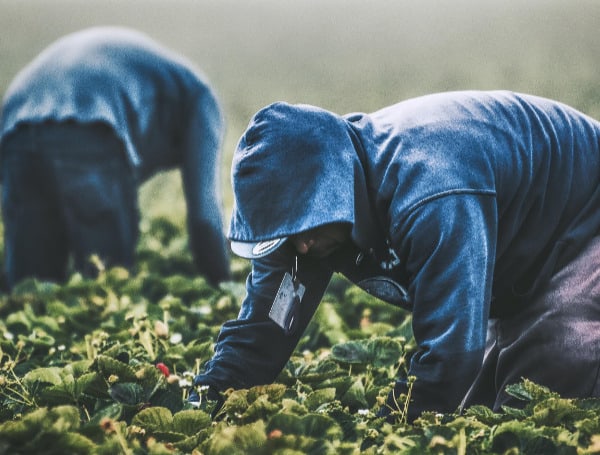A week after Hurricane Ian stormed across Florida, farmers and ranchers continue waiting for flood waters to recede to get a full picture of the destruction to citrus groves and cattle operations.
The storm killed at least 200 cows at a dairy farm in Myakka City, while beef cattle counts remain uncertain until herds can navigate back from swamps and hills where they went to ride out the storm.
“About 42 percent of our Florida cow herd, our cattle population in the state was affected by this storm,” Florida Cattlemen’s Association Executive Vice President Jim Handley said.
Handley said he couldn’t give an estimate on the full impact to the industry, as ranchers scramble for feed and continue to make emergency repairs to fences and buildings.
Meanwhile, the citrus industry is anecdotally reporting large numbers of uprooted trees and downed fruit, primarily the early season Hamlin orange variety, in Collier, Lee, DeSoto, Hardee and Polk counties. Those counties play a major role in growing oranges.
“It wouldn’t surprise me if somewhere north of a majority of the early crop is lost,” said Sen. Ben Albritton, a Wauchula Republican who owns citrus groves and is expected to become Senate president in 2024.
Albritton added that buds still on trees could also eventually fall, as whipping of the storm could have damaged the connections between trees and fruit.
“We have yet, I think, to see the full extent of what the damage is going to be,” Albritton said.
The U.S. Department of Agriculture is scheduled Wednesday to release its first monthly orange-crop forecast of the 2022-2023 growing season.
The state Department of Agriculture and Consumer Services and the University of Florida’s Institute of Food and Agricultural Sciences Extension on Wednesday continued reaching out to farmers and ranchers to survey damages.
The storm’s impact on processing Grade “A” milk, along with a limited availability of trucks, caused the Department of Agriculture and Consumer Services to publish an emergency rule Thursday that increases storage time for raw milk.
“Stores have a very limited supply of Grade “A” products post Hurricane Ian and dairy farms will be forced to dump milk if the processing of these products cannot be expedited by this emergency rule,” the rule said.
The rule also noted that lactating dairy cows must be milked or will suffer serious health implications, which would affect milk supplies.
On Tuesday, the state activated the Florida Small Business Emergency Loan Program, which designates at least $10 million through short-term, zero-interest loans for small agricultural producers in 22 counties. Applications from farmers in Charlotte, Collier, Lee and Sarasota counties will be moved to the front of the pile. The Category 4 hurricane made landfall Sept. 28 in Lee and Charlotte counties before causing damage across the state.
Appearing Tuesday on Fox Business News, Senate President Wilton Simpson, a Trilby Republican running to become agriculture commissioner, pointed to a need to get crops planted within a narrow window that has been delayed a couple of weeks because of the hurricane.
Simpson, who owns an egg farm, said growers “will come through this storm,” but repairs needed from Ian are “one more weight to add on to the back of the farmer.”
Albritton said it remains too early to determine what actions the Legislature could take during the 2023 session, which begins in March, but he believes lawmakers understand farming remains a stable economic driver for Florida.
While ranch operations have restarted, the industry remains in a “kind of survival mode” after Ian, which was more wide-reaching and wetter than 2004’s Hurricane Charley in the same area, Handley said.
“Normalcy? We hope in four or five weeks this water will dry off,” Handley said. “Then cooler nights will be here. There will be some concern of mosquitoes with this water standing around too long. But we’re open for business.”
A lingering concern will be the impact of the storm on individual cattle, which could result in smaller calves.
“The stress on the cow herd will carry over to the calves that they’re gonna to have right here this fall,” Handley said. “And then the next few calves will be stressed for at least two years.”
In rural counties he’s been able to visit, Albritton said he has seen buildings blown in, roofs peeled back as if opened by a can opener and recreational vehicles tossed on their sides.
“There’s a nursery operation in Arcadia that was just devastated,” Albritton said. “The greenhouses were really, really damaged. Heavily damaged. So, yeah, it’s really bad.”
One positive note could be the state’s winter vegetables, which are predominantly grown southeast of Lake Okeechobee in the Everglades Agricultural Area. The region faced tropical-storm force winds, rather than hurricane winds.
“I think they were largely spared,” Albritton said.
Visit Tampafp.com for Politics, Sports, and National Headlines. Support journalism by clicking here to our GiveSendGo or sign up for our free newsletter by clicking here.
Android Users, Click Here To Download The Free Press App And Never Miss A Story. Follow Us On Facebook Here Or Twitter Here.
Copyright 2022 The Free Press, LLC, tampafp.com. All rights reserved. This material may not be published, broadcast, rewritten, or redistributed.

